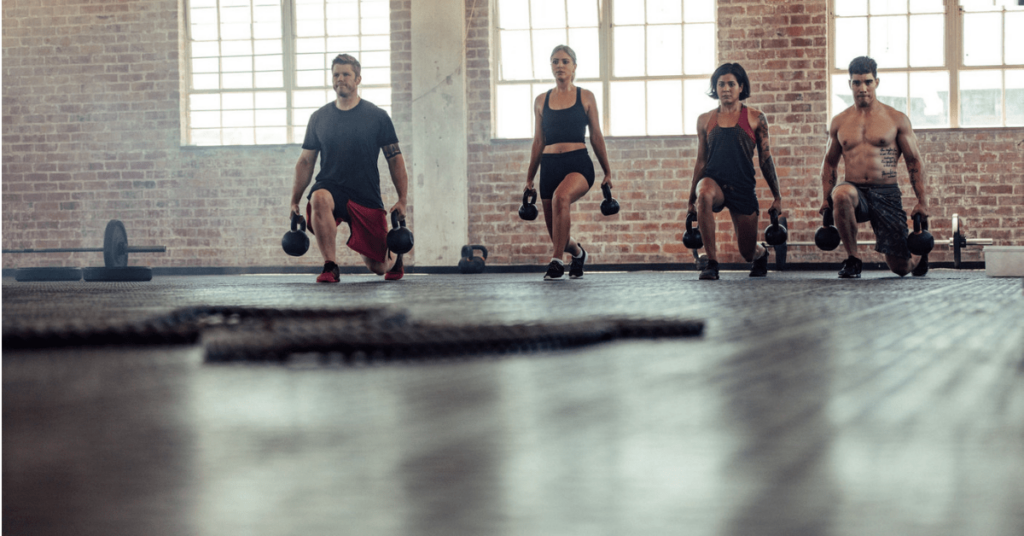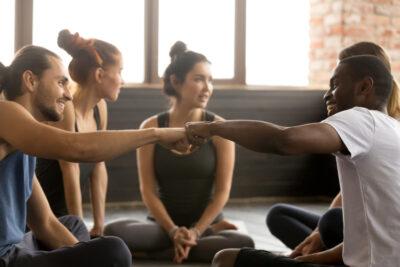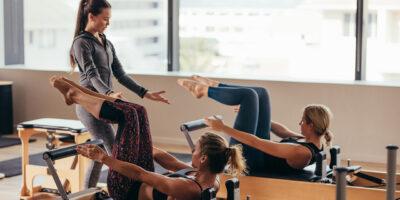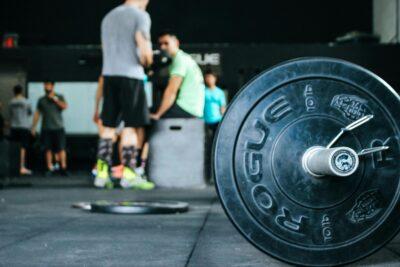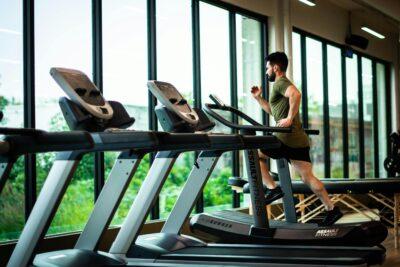They say a picture is worth a thousand words.
But how much is a video worth?
Well according to marketers who use video regularly, a hell of a lot. Looking at these video marketing stats gathered by Smart Insights, not only does having videos embedded in your website leads to an 80% increase in conversions, 83% of video marketers believe they get a good ROI on their video marketing efforts.
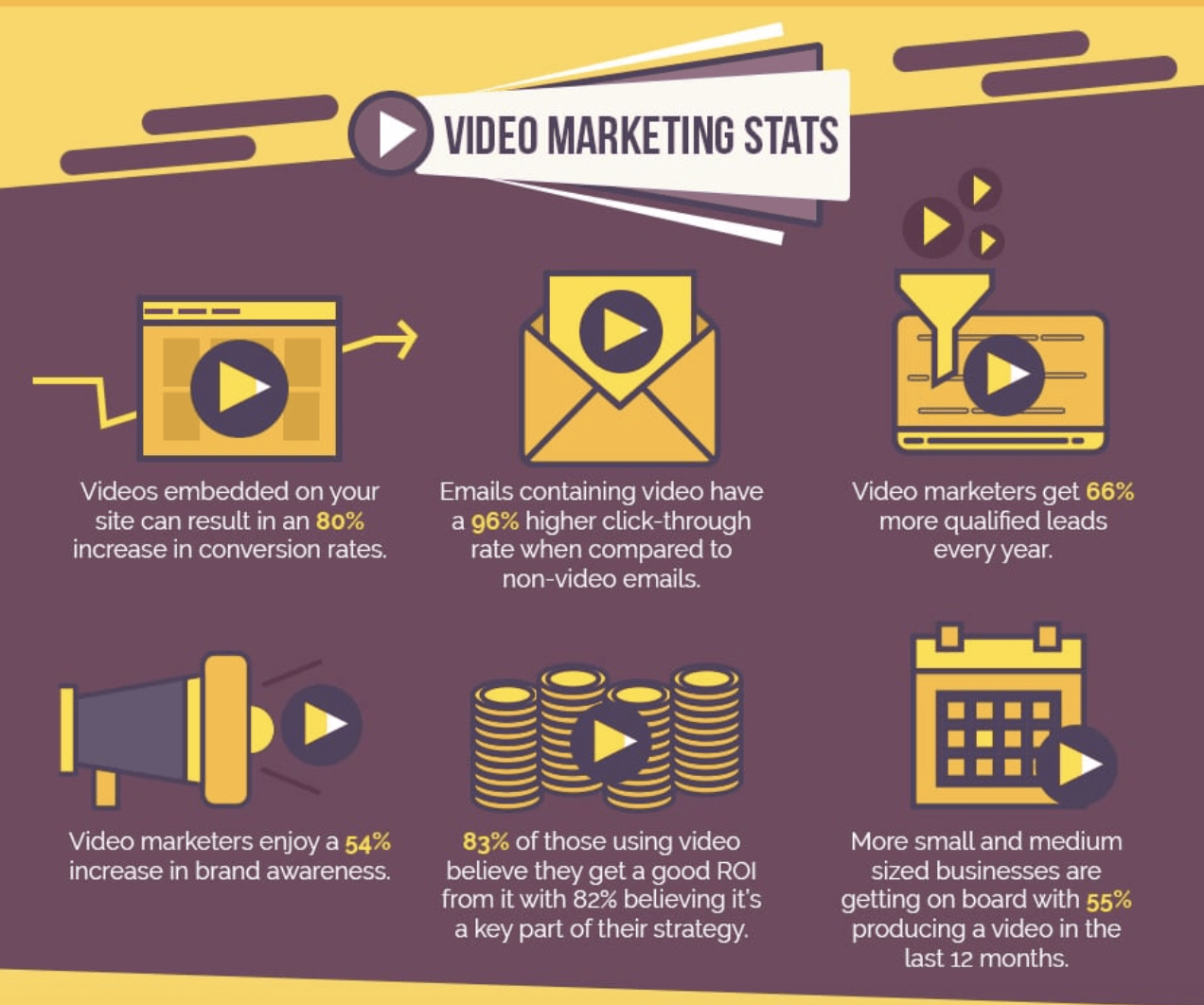
Source: Smart Insights
The stats speak for themselves. But let’s be honest you don’t need to know the numbers to see the effectiveness of video as a marketing tool. As a way to get a message across in a compelling way, nothing can beat video when done right. And because of this, it’s everywhere!
Think of the last time you scrolled through your Facebook feed or flicked through your Instagram stories. It’s safe to say at least 60% of the content was video.
As we discussed in our Fitness Marketing Guide for the Modern Fitness Founder video is such an effective lead generation channel for a fitness business. On top of that, it’s so key to increasing online engagement and ultimately building your brand. And you really don’t need the budget or the expertise found in the latest big-budget blockbuster to make great video content.
In this article, we will discuss the effective combination of fitness and video, tips and creating great video and finally how you can distribute your video content effectively on organic and paid platforms. Click on any section below.
Fitness and Video Are a Powerful Combination
Video is the perfect medium for storytelling and its no surprise that more and more fitness studios are using it as a lead generation channel. But this is not a new phenomenon. Fitness and video are a powerful combination whose history together really began in the 1980s
What Is the History of Fitness and Video?
The release of the first VHS tape in the USA on August 23rd, 1977, launched the home video industry and drastically changed the economics of the film and television business. Previous to this, tape had been used in professional environments such as tv studios and medical centers.
However, it wasn’t only the tv and film industry that was revolutionized by VHS. The fitness industry benefited hugely from the home video industry with the rise of the exercise video. Classes were brought into peoples livings room for the first time and the instructors running their classes became household names. Clad in leg warmers, Jane Fonda started an aerobics movement that was also promoted by fitness legend Richard Simmons. Later on, in the early 1990s, the likes of Billy Blanks found fame with his martial arts inspired workout Tae Bo.
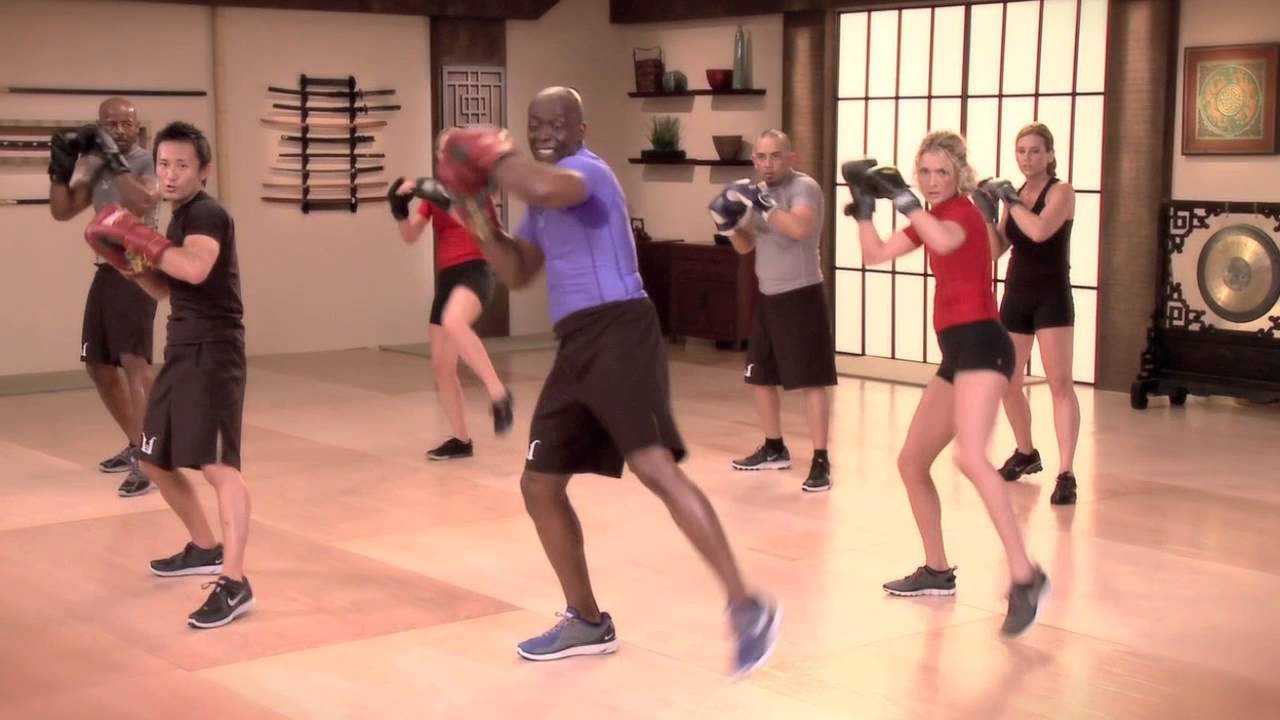
Source: Billy Blanks Tae Bo® Fitness
Fast forward to the late 1990s and the change in technology from VHS to DVD, and online video only accelerated the at-home fitness industry with many individuals and companies selling whole workout programs that would span multiple discs. Examples include Chalene Johnson who holds the Guinness World Record for most fitness video titles and Shaun Ts famous Insanity home workout.
Now that social media is the only game in town when it comes to effectively distributing your message to the masses, the gateway to success for a small business or individual has become a whole lot wider. Take a look, for example, at the rise of the fitness influencer, whose savvy use of video, amongst other forms of content has seen them build audiences of million. Shona Vertue, for instance, is a huge advocate of video content, especially on Instagram. She smartly distributes her health and fitness video content across the Feed, TV and Stories sections of the platform to significant effect.
Is the Future VR?
While there is something to be said for the massive potential of audio as the dominant communication channel (why do think everyone is podcasting?), the next stage when it comes to visual content is Virtual Reality(VR). Holders are now commercially available to turn smartphones into VR headsets, and the likes of Google Glass and Oculus Rift are blurring the lines between reality and the online world.
And of course, the fitness industry has picked up on this. The development of fitness related technology has brought the likes of high-intensity interval training, dance and other cardio style workouts into the living room in a more real way than Richard Simmons ever could. Companies like Peleton(cycling), Tonal(weight-training) and Crew(rowing) not only bring these workouts to life but give you the virtual and physical tools to do so. One of the most interesting examples of this is the Mayweather Boxing + Fitness VR, which provides you with immersive training and sparring experience. It is currently only available at a Mayweather studio, but it’s just a matter of time before it is available for home use.
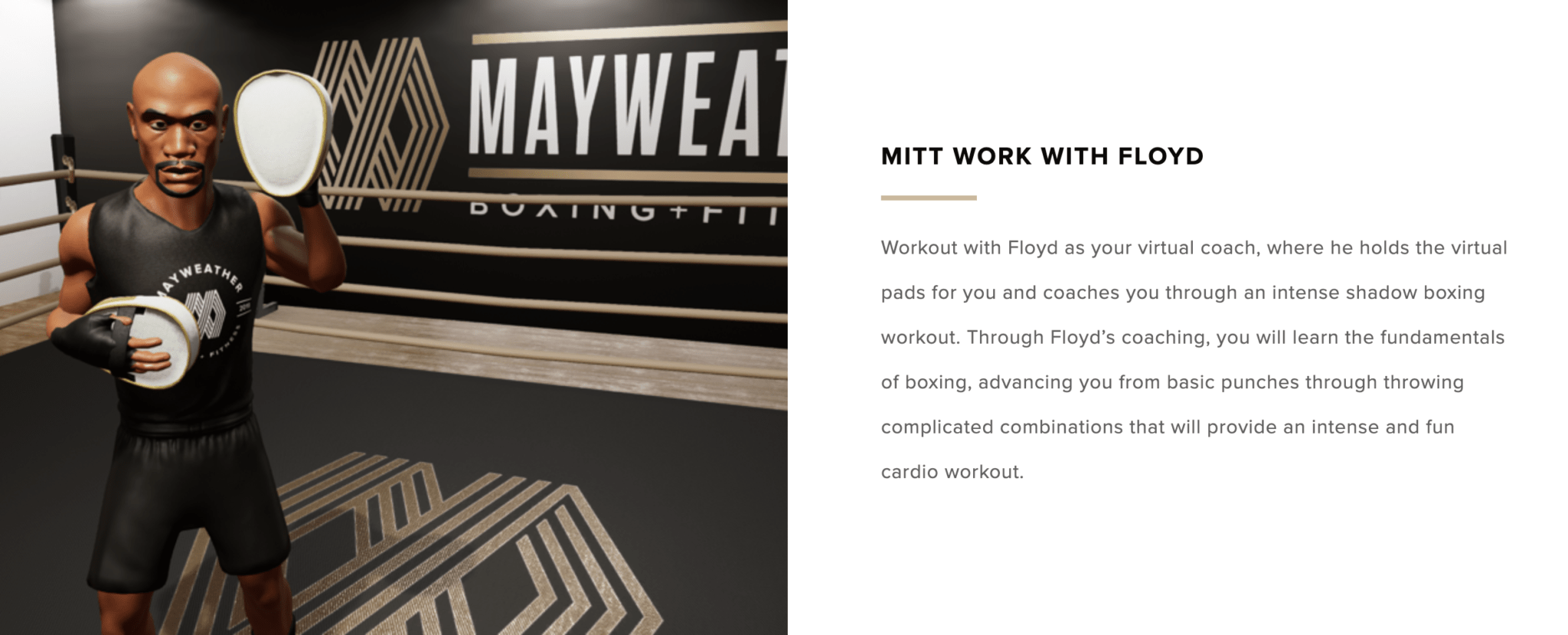
Source: Mayweather.fit
Producing Good Quality Fitness Video
While creating your first video may seem intimidating, don’t let it put you off entirely. The availability of low-cost software and hardware has allowed the majority of people to shoot and edit good quality video content. When it comes down to it nearly everyone carries a powerful media production tool in their pocket in the form of their smartphone.
Shooting video content can be as complicated or as easy as you want it to be. Aim for simplicity first and then over time, with practice, you will be able to try more elaborate forms of video content.
What Is the Best Equipment for Creating Fitness Video Content?
Smartphone: Most commercial smartphones these days can shoot video in HD and even 4k quality. It is easy to use and handy for shooting video on the go. The majority of people have a mid-range Android handset or iPhone in their pocket. Great for making self-shot “selfie” style videos. They also make it easier for your members to shoot their testimonials. According to Digital Camera World, the best smartphone for shooting video on the market is the Sony Xperia XZ2 Premium. Priced at just above mid-range, this phone has excellent low light video recording and slo-mo capabilities.
Digital Camera: While the quality of smartphones has become close to that of a digital camera, it’s still probably a good idea to have a separate camera for recording content. Up steps your trusty digital camera. One of the most popular cameras amongst vloggers and social media influencers is the Canon G7x. It is a compact camera with a good image quality that is perfect for those starting out. Take a look at these seven tips and tricks on how to get the best out of this camera.
On top of having a good camera, various add-ons can help improve your footage. The guys over at Shutterstock have put together a great guide on the additional accessories you might need to purchase.
What Is the Best Software for Video Editing?
iMovie: This is a free app that’s available on all MacBooks and IPads. It is a more user-friendly version that the more professional Final Cut Pro.
The Top 10 Barriers
Slowing Your Fitness
Business Growth
Discover more Adobe Premiere Pro: This is a more sophisticated video editing system used by amateur videographers and professionals alike. This is a paid piece of software that you download from Adobe. Reasonably priced and a more powerful tool than iMovie, its available on both PC and Mac.
Some quick fire editing tips: Let’s say you wanted to record a video under 60 seconds for Instagram. Plan out what you are going to say, maybe its a video about a cardio workout. Shoot your sixty seconds, and then you put it into iMovie or Premiere Pro. Then edit it down into bite-size content that is then suitable to distribute on Instagram.
With Youtube sometimes putting up longer form videos (15 mins +) will have less engagement as peoples attention span seems to be a lot shorter. People will prefer to watch 10 2 minute videos that your group into a playlist rather than one long 20-minute video so do this instead of the 15 minute long tutorials.
How Do You Create Good Video Content?
So video quality is now a given with the advances in technology. But does that ultimately mean that you will create great video content? Look you don’t need the skills of Spielberg to create a compelling piece of visual content. You do, however, need to follow a few simple rules when it comes shooting video.
Composition: Say you are shooting one of your trainers going through an exercise your studio. One of the critical things you have to get right is where the trainer sits in the frame. If you are using a phone, get the orientation right on your phone. Try and shoot everything in landscape mode (phone on its side). The reason for this is that landscape mode better mimics the frame of a professional camera. Portrait mode can look amateurish unless the piece is specifically for Facebook or Instagram Stories. However, there is more acceptance now of shooting video in portrait mode and more and more media is consumed this way.
When deciding how to frame someone in a shot, always remember the “rule of thirds.”
You divide your image into an imaginary lined grid with nine equal sections. The objective is to make sure the subject in the crosshairs of the top two intersections as below.
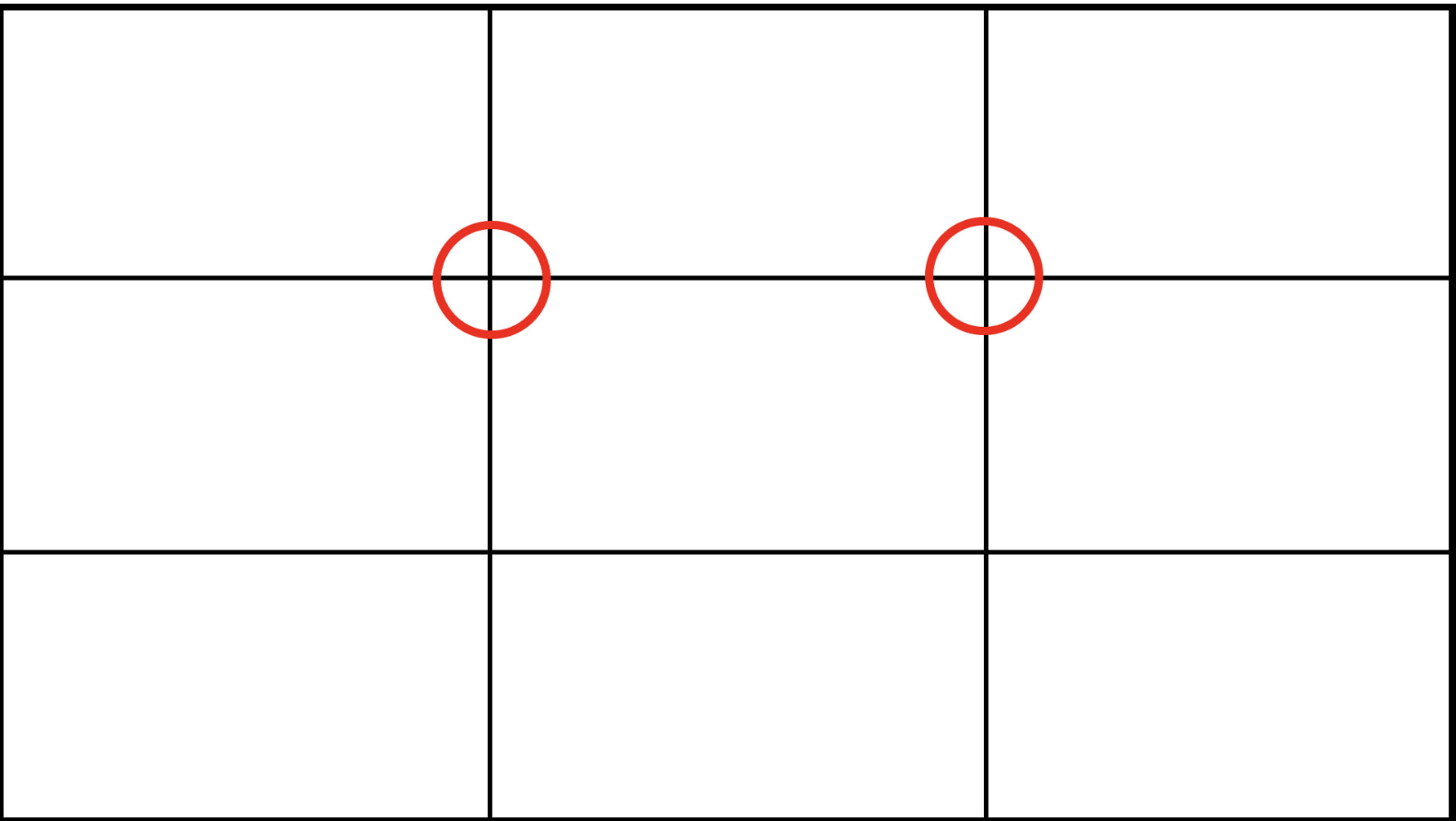
Source: ELearning Brothers
By doing this, you are following the eyes natural focus. Here is an example of a runner standing on the bridge.
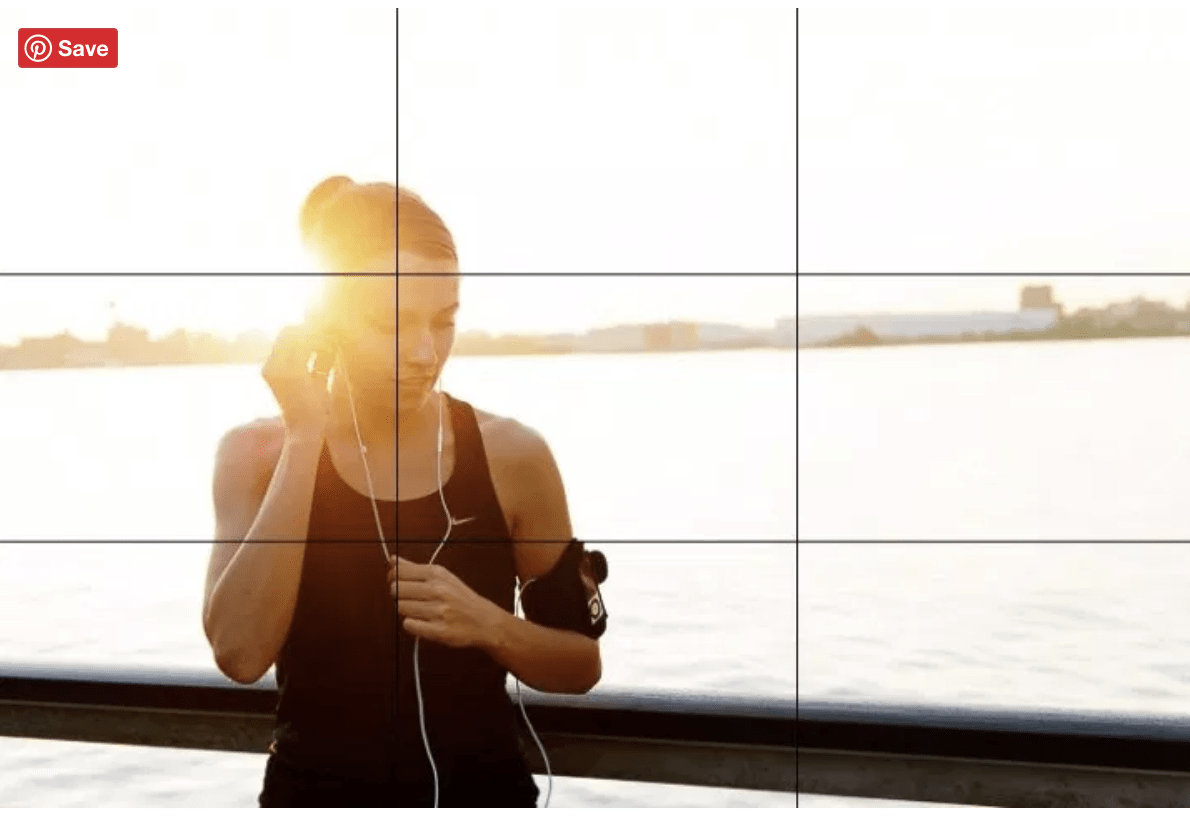
Source: Digital Photography School
You can also place your subject dead in the center of the frame as long as you keep the eye line in the top third on the frame. If there is too much space above them, the eye will wander to the empty space above. This type of framing also allows you to put in text in the area beside your subject, such as a lower third or information about the exercise you are filming.
Audio: Good audio is essential to the overall effect of your video. Bad audio quality can immediately turn off the viewer, no matter how good your image quality is. This is a must as most indoor gym locations are echoey with random background noise. An easy solution is to use a portable clip-on mic like the Lavalier Microphone that can give you the great audio you need.
Lighting: Lighting is one of the factors that can trip up a lot of first-time video creators. As you more than likely will not have an elaborate lighting system with you when you are shooting video, the rule is to keep it simple. Avoid shooting someone against a source of light as they will be silhouetted. Have the light source directly in front of them, and it will cause a lot of shadows. The best bet is to keep the light to the side or purchase a clip-on LED light to add pro-quality light to your shot.
Focus: Finally, keep your shots in focus! Tap the screen for Android and hold your finger in place for Apple. When using a digital camera, the safest bet is to make sure your autofocus is switched on.
Pro tip: Finding time to shoot regular video content can be tough on a fitness entrepreneurs hectic schedule. Therefore try and set aside for a few hours and dedicate it to filming and editing your content. For example, if you are shooting something like the “12 Exercises of Christmas”. Film everything in one day and cut down into 12 individual videos. Do this instead of filming a video a day as you will inevitably have something come up that stops you.
Distributing Your Video and Getting the Best ROI
Once you have created your video content where do you distribute it? And more importantly, how do you make sure that you are getting the best Return On Investment(ROI) for your video marketing efforts?
The best platforms for organically distributing your video is Instagram and Youtube. Facebook is still an important platform. But its lack of organic reach means its better to utilize its ad platform. Linkedin launched its video capabilities back in 2017 and has been adopted enthusiastically by its biggest users. Think about distributing more business and entrepreneur type video on this platform.
How Do You Effectively Distribute Your Video Online?
Organically: For distribution of your video content organically Instagram and Youtube is the most suitable. By setting up a Youtube page, you can create an online hub that you upload all your video content. Facebook and Instagram Live are great ways of connecting with your customers in real time. Live video also has a degree of authenticity to it, which is always appealing.
Instagram is one of the most popular apps in the world at the moment, and Mashable has called it one of the most influential photo sharing apps of all time. As well as its Instagram Live feature, the platform also has the Feed, and the Stories feature where you can post a video. Since Instagram Stories was launched in 2016, it has taken over Snapchat as the dominant temporary content sharing platform. Every major influencer and brand is sharing an extensive Instagram story nearly every day. At least 2 million brands are using Stories, and a third of Stories viewed are from businesses.
This is where the world looks first when it logs on so its a great place to share your video content daily.
Paid Advertising: Facebook and Instagram Ads are still the best places to run video ads. However, there are a couple of important factors that you need to think of before running your video ad:
- Test your video organically on your Feed or Story first. The best performing one could be your best best.
- While we do stress the importance of good audio, make sure that they can be watched with the sound off. Captions are an excellent way to achieve this. Internal tests from Facebook show that captioned video ads increase video view time by an average of 12%
- Keep it short and sweet. Research from Facebook suggests that 47% of the Value of Facebook Video Ads Happens in the First 3 Seconds.
On a final note, Facebook and Instagram allow you to retarget those who have viewed your video but did not take an action. You can make a Custom Audience based on the length of video they have watched and how long ago they have engaged. This is a great way to get more value out of your video ads outside the first campaign.
In Summary
Forward-thinking fitness businesses are hopping aboard the video marketing train as it such an effective tool for lead generation and overall brand building. By following this guide and putting in the time and effort, you will start to see results from video marketing.
Table of contents


